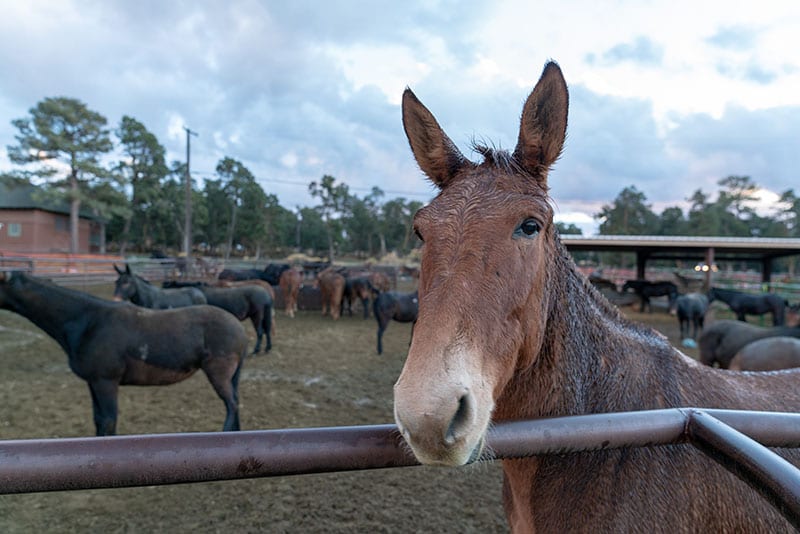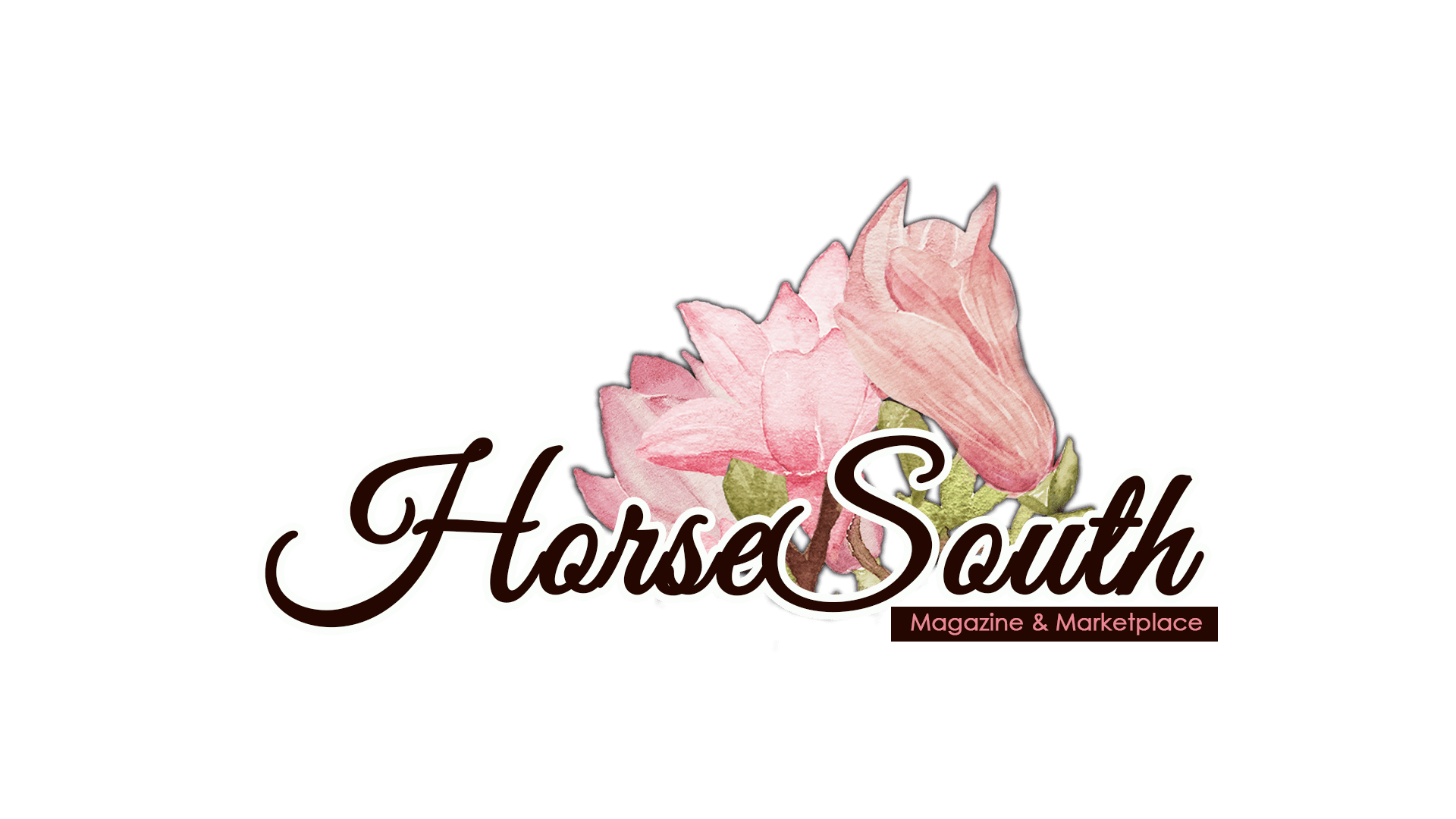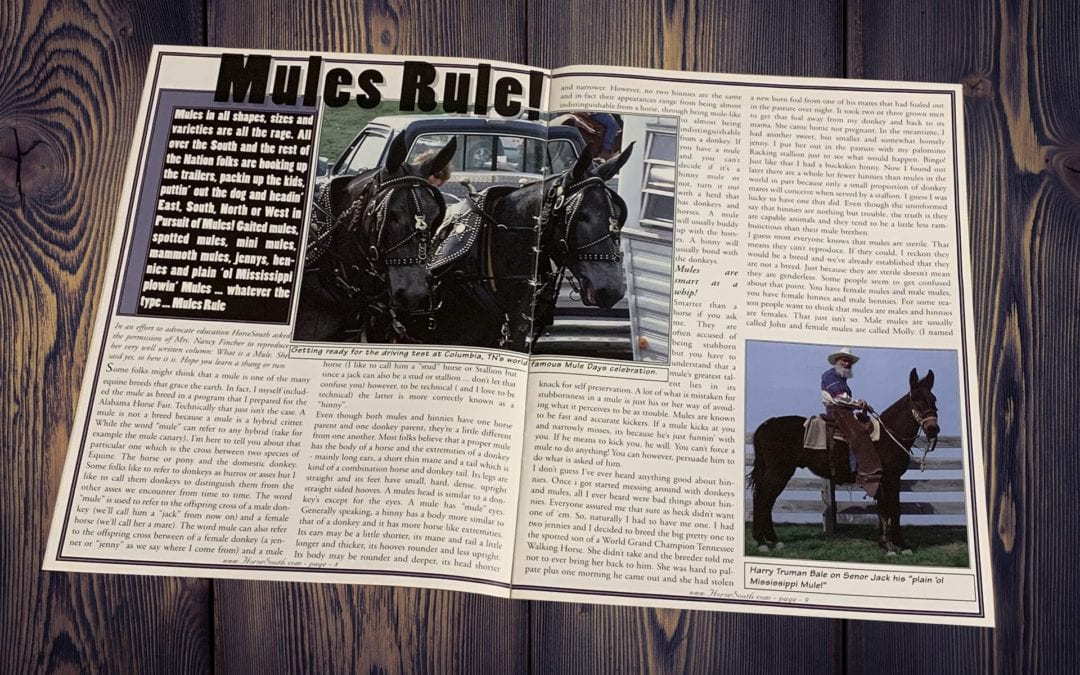Mules in all shapes, sizes and varieties are all the rage. All over the South and the rest of the Nation folks are hooking up the trailers, packin up the kids, puttin’ out the dog and headen’ East, South, North or West in Pursuit of Mules! Gaited mules, spotted mules, mini mules, mammoth mules, jenny’s, hennies and plain ‘ol Mississippi plowin’ Mules… whatever the type… Mules Rule.
In an effort to advocate education HorseSouth asked the permission of Mrs. Nancy Fincher to reproduce her very well written column: What is a Mule. She said yes, so here it is. Hope you learn a thing or two.
Some folks might think that a mule is one of the many equine breeds that grace the earth. In fact, I myself included the mule as breed in a program that I prepared for the Alabama Horse Fair. Technically that just isn’t the case. A mule is not a breed because a mule is a hybrid critter. While the word “mule” can refer to any hybrid (take for example the mule canary), I’m here to tell you about that particular one which is the cross between two species of Equine.

The horse or pony and the domestic donkey. Some folks like to refer to donkeys as boroughs or asses but I like to call them donkeys to distinguish them from the other assets we encounter from time to time. The word “meal“ Is used to refer to the offspring cross of a male donkey (Will call him a “Jack” from now on) and a female Horse (we’ll call her a mare). The word Mule can also refer to the offspring cross between a female donkey (a Jennet or “Jenny” as we say where I’m from) and a male horse (I like to call him a “stud” horse or Stallion but since a Jack can also be a stud or stallion… don’t let that confuse you) however, to be technical (and I love to be technical) the latter is more correctly known as a “hinny”.
Even though both Mules and hinnies have one horse parent and one donkey parent, They’re a little different from one another. Most folks believe that a proper mule has the body of a horse and the extremities of a donkey- mainly long ears, a short thin Main and a tail which is kind of a combination horse and donkey tail. Its legs are straight and its feet have small, hard, dense, upright straight sided hooves. Emile’s head is similar to a donkey’s except for the eyes. In your has “mule” eyes. Generally speaking, a hinny has a body more similar to that of a donkey and it has more horse-like extremities. It’s ears may be a little shorter, it’s main and tail a little longer and thicker, it’s hooves are rounder and less upright. Its body may be rounder and deeper, its head shorter and narrower. However, no two hinneys are the same, and in fact, their appearances range from being almost indistinguishable from a horse, through being mule-like to almost being indistinguishable from a donkey. If you have a mule and you can’t decide if it’s a hinny mule or not, turn it out with a herd that has donkeys and horses. A mule will usually buddy us with the horses. A hinny will usually bond with the donkeys.
Mules are smart as a whip! Smarter than a horse, if you ask me. They are often accused of being stubborn but you have to understand that I mules greatest talent lies in its knack for self-preservation. A lot of what is mistaken for stubbornness and a mule is just his or her way of avoiding what it perceives to be as trouble. Mules are known to be fast and accurate kickers. If a mule at kicks you and nearly misses, it’s because he’s just funnin’ with you. If he means to kick you, he will. You can’t force a mule to do anything! Catch up you can’t however, persuade him to do what is asked of him.
I don’t guess I’ve ever heard anything good about hennies. Once I got started messing around with donkeys and mules, all I ever heard were bad things about hennies. Everyone assured me that I sure as heck didn’t want one of ‘em. So, naturally I had to have me one. I had two jennies and I decided to breed the big pretty one to the spotted Son of a World Grand Champion Tennessee Walking Horse. She didn’t take, and the breeder told me not to ever bring her back to him. She was hard to palpate, plus one morning he came out and she had stolen a newborn foal from one of his mares that had foaled out in the pasture over night. It took two or three grown men to get that foal away from my donkey and back to its mama. She came home not pregnant. In the meantime, I had another sweet, but smaller and somewhat homely jenny. I put her out in the pasture with my Palomino racking stallion just to see what would happen. Bingo! Just like that I had a buckskin hinny. Now I found out later there are a whole lot fewer hennies than mules in the world in part because only a small proportion of donkey mares will conceive when served by a stallion. I guess I was lucky to have one that did. Even though the uninformed say that hinneys are nothing but trouble, the truth is they are capable animals and they tend to be a little less rambunctious than their mule brethren.
I guess most everyone knows that mules are sterile. That means they can’t reproduce. If they could, I reckon they would be a breed and we’ve already established that they are not a breed. Just because they are sterile doesn’t mean they are genderless. Some people seem to get confused about that point. You have female mules and male mules, you have female hennies and male hennies. For some reason people want to think that the mules are males and hinnies or females. That just isn’t so. Male mules are usually called John and female mules are called Molly. ( I named my jenny “Molly” just to confuse things. I named my hinny scooter because it fits him.) Male mules and hinnies have to be gelded just like donkeys and horses to keep them from breeding the female stock. Just because they’re sterile doesn’t mean they don’t want to have fun! Mules and hinnies come in all sizes, a variety of colors, and their own unique personalities. I don’t really know very much about mules except I know what one is, and now, so do you.
Nancy Fincher is a dedicated member of the Alabama Horse Council, she and her husband Ray raise Tennessee walking horses in Pell City, AL.

